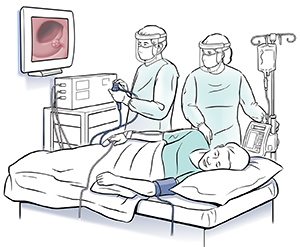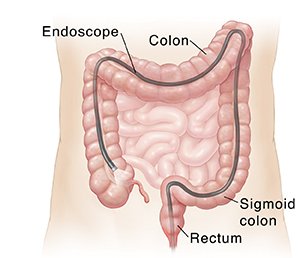Colonoscopy
Colonoscopy

Why is colonoscopy done?
The test is done to help look for colon cancer. And it can help find the source of abdominal pain, bleeding, and changes in bowel habits. It may be needed once a year, depending on factors such as your:
Age
Health history
Family health history
Symptoms
Results from any prior colonoscopy
Risks and possible complications
These include:
Bleeding
A puncture or tear in the colon
Risks of anesthesia
A cancer lesion not being seen
Getting ready
To prepare for the test:
Talk with your healthcare provider about the risks of the test (see below). Also ask your healthcare provider about alternatives to the test.
Tell your healthcare provider about any medicines you take. Also tell him or her about any health conditions you may have.
Make sure your rectum and colon are empty for the test. Follow the diet and bowel prep instructions exactly. If you don’t, the test may need to be rescheduled.
Plan for a friend or family member to drive you home after the test.

During the test
The test is usually done in the hospital on an outpatient basis. This means you go home the same day. The procedure takes about 30 minutes. During that time:
You are given relaxing (sedating) medicine through an IV line. You may be drowsy, or fully asleep.
The healthcare provider will first give you a physical exam to check for anal and rectal problems.
Then the anus is lubricated and the scope inserted.
If you are awake, you may have a feeling similar to needing to have a bowel movement. You may also feel pressure as air is pumped into the colon. It’s OK to pass gas during the procedure.
Biopsy, polyp removal, or other treatments may be done during the test.
After the test
You may have gas right after the test. It can help to try to pass it to help prevent later bloating. Your healthcare provider may discuss the results with you right away. Or you may need to schedule a follow-up visit to talk about the results. After the test, you can go back to your normal eating and other activities. You may be tired from the sedation and need to rest for a few hours.
Updated:
March 21, 2017
Reviewed By:
Fraser, Marianne, MSN, RN,Lehrer, Jenifer, MD